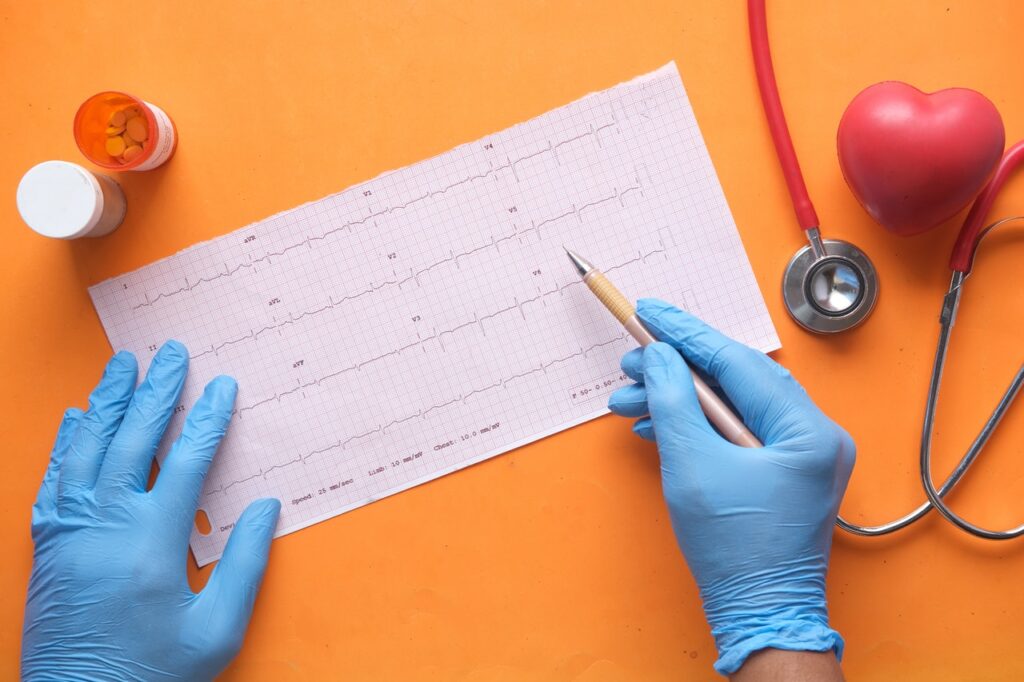A New Pain-free Way to Treat Ventricular Arrhythmia

A breakthrough study sets the foundation of a ground-breaking treatment regimen for treating ventricular arrhythmia. The study, published in Nature Communications, demonstrates the design and feasibility of a new hydrogel-based pacing modality.
The urgent need for an effective therapeutic regimen for ventricular arrhythmia inspired a team led by Dr. Mehdi Razavi at The Texas Heart Institute (THI), to collaborate The University of Texas at Austin (UT Austin) Cockrell School of Engineering led by Dr. Elizabeth Cosgriff-Hernandez, to co-develop an innovative strategy that addresses the pathophysiology of re-entrant arrhythmia.
Ventricular arrhythmia, which occurs in the lower chambers of the heart or ventricles, is the leading cause of sudden cardiac death in the United States.
When heart rhythm abnormality occurs in a self-sustained manner, it is called re-entrant arrhythmia, which is usually fatal.
“Re-entry occurs mainly from delayed conduction in scarred heart tissues, usually after coronary artery occlusion during a heart attack, which can be corrected by enabling pacing in these regions,” said Dr. Razavi, a practicing cardiologist and cardiac electrophysiologist.
“These hydrogels then can access the scarred tissue, thereby enabling direct pacing of the otherwise inaccessible regions of the heart.”
Given hydrogels’ biostability, biocompatibility, tunable properties, and the ease of incorporating electrical conductivity, the scientists are exploring them as potential electrodes that can be easily delivered inside coronary veins.
A clinical advantage of the unique system is that ischemia can be avoided by delivering the hydrogel using the veins.
The researchers successfully deployed the innovative hydrogel technology through minimally invasive catheter delivery in a pig model.
“The hydrogels have significant conductive properties that enable simultaneous pacing from multiple sites along the length of the hydrogel and create a conduction highway similar to those in Purkinje fibers,” according to Dr. Cosgriff-Hernandez.
Today, arrhythmia is treatable with medicines and procedures that control the irregular rhythms.
The current anti-arrhythmic drugs on the market are not always effective; although the drugs slow the conduction velocity, they facilitate re-entry arrhythmia.
Moreover, these drugs can be toxic and can lead to the destruction of tissues near the diseased regions of the heart.
Even with the widely used interventional ablation therapies, arrhythmia recurs in a significant proportion of patients. None of these procedures address the mechanism of re-entry.
Cardiac defibrillators implanted to compensate for the shortfalls in the current therapy options are painful when delivering electric shocks to restore heart rhythm and can severely deteriorate the patient’s quality of life.
If left untreated, arrhythmia can damage the heart, brain, or other organs, leading to stroke or cardiac arrest, during which the heart suddenly and unexpectedly stops beating.
“When injected into target vessels, the conductive hydrogel conforms to the patient’s vessel morphology. Adding a traditional pacemaker to this gel allows for pacing that resembles the native conduction in the heart — effectively mimicking the native electrical rhythm of the heart — and extinguishes the cause for arrhythmia, providing painless defibrillation,” added Dr. Cosgriff-Hernandez.
The work demonstrates for the first time the ability to confer direct electrical stimulation of the native and scarred mid-myocardium through injectable hydrogel electrodes as a pacing modality.
With minimally invasive catheter delivery and standard pacemaker technologies, this study indicates the feasibility of a novel pacing modality that resembles native conduction, potentially eliminating lethal re-entrant arrhythmia and providing painless defibrillation, which can be successfully adopted in a clinical workflow.
The scientific advance is significant considering pain management is highly relevant to overall wellness for patients with heart, lung, and blood diseases.
Such innovation in painless defibrillation and preventing arrhythmia could revolutionize cardiac rhythm management.
Source: Texas Heart Institute

